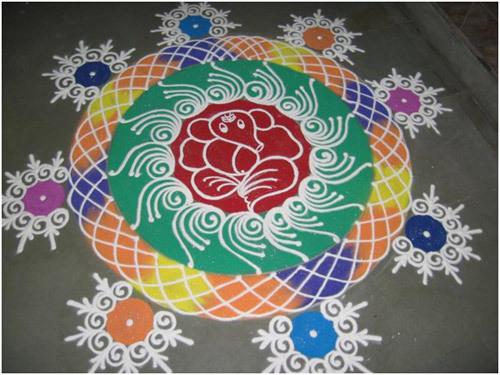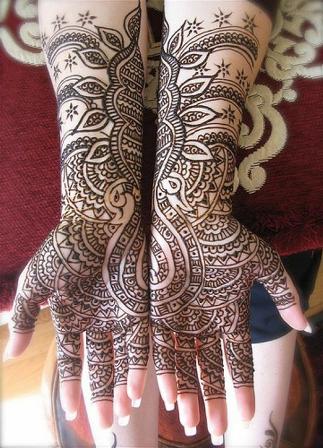Indian Jewelry
India and jewelry, jewelry
and Indian women - the terms are linked inherently. At the time of wedding as
well as numerous other occasions, a woman is gifted jewelry by her parents and
relatives. Although the gift is meant to give her security in contingency,
ornamentation is an obvious purpose. All the cities across the length and width
of India have shops of jewelers - some traditional and some modern jewelers,
catering to the need of all kinds. Not that the affluent class people wear
ornaments, there are low cost jewelry items in ample, which cater the demand of
low income group as well.

India houses various kinds of jewelry arts,
ranging from Minakari and Kundan to stone and bead work. The craft of cutting
and polishing precious and semi-precious stones and giving them glamorous face
is something artistic. Emeralds, rubies, garnets, amethysts, corals, sapphires,
and turquoises are among the stones which are used for the enhancement of gold
and silver jewelry. Gold jewelry is the most popular among South Indian women.
In southern part of India, gold is considered auspicious and a status symbol.
Talking about the art on gold jewelry, Kundan is something that comes into our
mind.
It is
a Mughal-inspired art of setting precious stones like diamonds, rubies, and
emeralds in gold and silver jewelry. In Meenakari, enameling is done to protect
gold and floral pattern coloured in red, blue and green attracts the attention.
Silver jewelry is not far behind in popularity, particularly because of its
affordability, making it popular among low income group people. Jhumka, hansli,
chokar, nath and bracelets made of silver are quite popular among women in
India. In short, the range of jewelry in India is wide as well as varied.
Antique Jeywelr
The jewelry which is not in mainstream
production and of which the mode of production is no longer popular is known by
the name of 'Antique Jewelry.' This kind of jewelry has dull and rough look,
combined with an old world-world charm, and this serves as the major USP of
such jewelry.
Bead Jewelry
Bead art in India is five thousand year old and
dates back to the time of Indus Valley Civilization. People of that
civilization used to make beads out of gold, silver, copper, clay, ivory and
even wood. The excavated carried out there came out with finished and
unfinished beads from the site.
Bridal Jewelry
India has great tradition of wedding jewelry.
Made of superior metals and excellent quality, jewelry accentuates the beauty
of bride in multiples. Though these days silver and platinum jewelry is gaining
popularity, gold jewelry still holds the most popularity among Indians.
Custom Jewelry
Custom jewelry is personalized jewelry, which a
customer gets her made on her interest and fancy. This happens particularly in
cases where readymade jewelry does not match the taste of person. Custom
jewelry gives total freedom to customer about the specifics.
Fashion Jewelry
Fashion jewelry is also called costume jewelry, mainly for the reason that it
is not made of precious metals and stones, rather lighter and cheaper material
are used. Fashion jewelry is trend-conscious and keeps on changing as per
changing needs.
Filigree Jewelry
Filigree work is done on silver and involves
lots of precision and technicality, added with great amount of patience and an
eye for minute details. Historically, filigree work was quite popular in
countries like Egypt, Italy, and Spain. India's history of filigree work goes
back to early centuries.
Gold Jewelry
Gold is a metal that lures many. It gives the
security against any financial crisis, because of its easy liquidity, and is
also used by women for adorning themselves. Traditionally, gold has been
considered auspicious among Hindus and is regarded to be symbolic of Lakshmi,
the Goddess of Wealth.
Handmade jewelry
Talking about jewelry manufacturing in India is
as good as talking about handmade jewelry in India. A major chunk of jewelry in
the country is made by independent craftsmen. Traditionally also, a significant
part of jewelry manufacturing has been handmade jewelry.
Ivory Jewelry
Jewelry that is made from the tusk of an elephant is called ivory jewelry.
Importance of ivory jewelry can be guessed from the fact that in Gujarat, the
bride receives an ivory bangle from her family just before marriage as jewelry.
During marriage ceremony wearing of ivory bangles is must for bride.
Jadau Jewelry forms one of the ma
Jadau Jewelry jor examples of high skilled craftsmanship that
was brought into India by Mughals. Historically speaking, the tradition of
Jadau work has been in practice in the states of Rajasthan and Gujarat since
the Mughal era. Jadau jewellery is also called engraved jewelry.
Kundan Jewelry
During Mughal period, the art of kundan work reached Rajasthan from Delhi.
Later on, craftsmen from the different part of the country migrated to the place
and made Rajasthan a hub of Kundankari. Rulers and feudal lords gave patronage
to the art and it developed into perfection.
Lac Jewelry
Lac jewelry, also known as lacquer jewelry,
originated in Rajasthan and has gained considerable popularity in India today.
Lac jewelry is available in versatile designs, which add to its beauty. Among
the various items in lac jewelry, the bangles need a special mention.
Meenakari Jewelry
In Meenakari jewelry, precious stones are set and then enameled with gold.
Historically speaking, the art was introduced to Rajasthan artisans by Raja
Mansingh of Amer. He invited Lahore-based skilled artisans to his kingdom, and
their intermingling with the locals craftsmen resulted in an amalgam.
Navratna Jewelry
In Navratna jewelry, nine auspicious stones are
used in a single ornament. The belief behind this is that the nine stones
together ensure well being of the person who wears it. In India, Navratna
jewelry has been given major importance, because of its astrological
significance as well as its innate charm.
Pachchikam Jewelry
In the world of fashion and design, old trends tend to come over again and
again, though with slight changes. Pachchikam jewelry making craft is one of
the examples of jewelry that has come back once again. Originated in Gujarat
and Kutch, centuries ago, Pachchikam jewelry has again become popular.
Silver Jewelry
Silver Jewelry, along with gold jewelry, is
quite popular amongst Indian women. Ornaments made of silver, such as rings,
bracelets, chains, necklaces, nose rings, earrings, toe rings, heavy kadas, and
armlets, form integral part of Indian jewelry.
Stone Jewelry
Jewelry studded with different gems is quite
popular among Indians. For reasons ranging from spiritual to aesthetic to
health, gemstone jewelry has become the part of life of Indian women and men
both. These stone jewelries are worn according to the individual's astrological
chart and ruling of planet.
Temple Jewelry
Indian jewelry art is at times divided into three kinds - temple jewelry,
spiritual jewelry and bridal jewelry. Temple jewelry of India initially used to
be described as the jewelry used to adorn the idols of Gods and Goddesses. The
statues In India were ornamented with chunky necklaces.
Tribal Jewelry
Tribal jewelry in India is quite rich. Each tribe has kept its unique style of
jewelry intact even now. The original format of jewelry design has been
preserved by ethnic tribal. Jewelry that is made of bone, wood, clay, shells
and crude metal, by tribals, is not only attractive, but also holds a distinct
rustic charm.






.jpg)